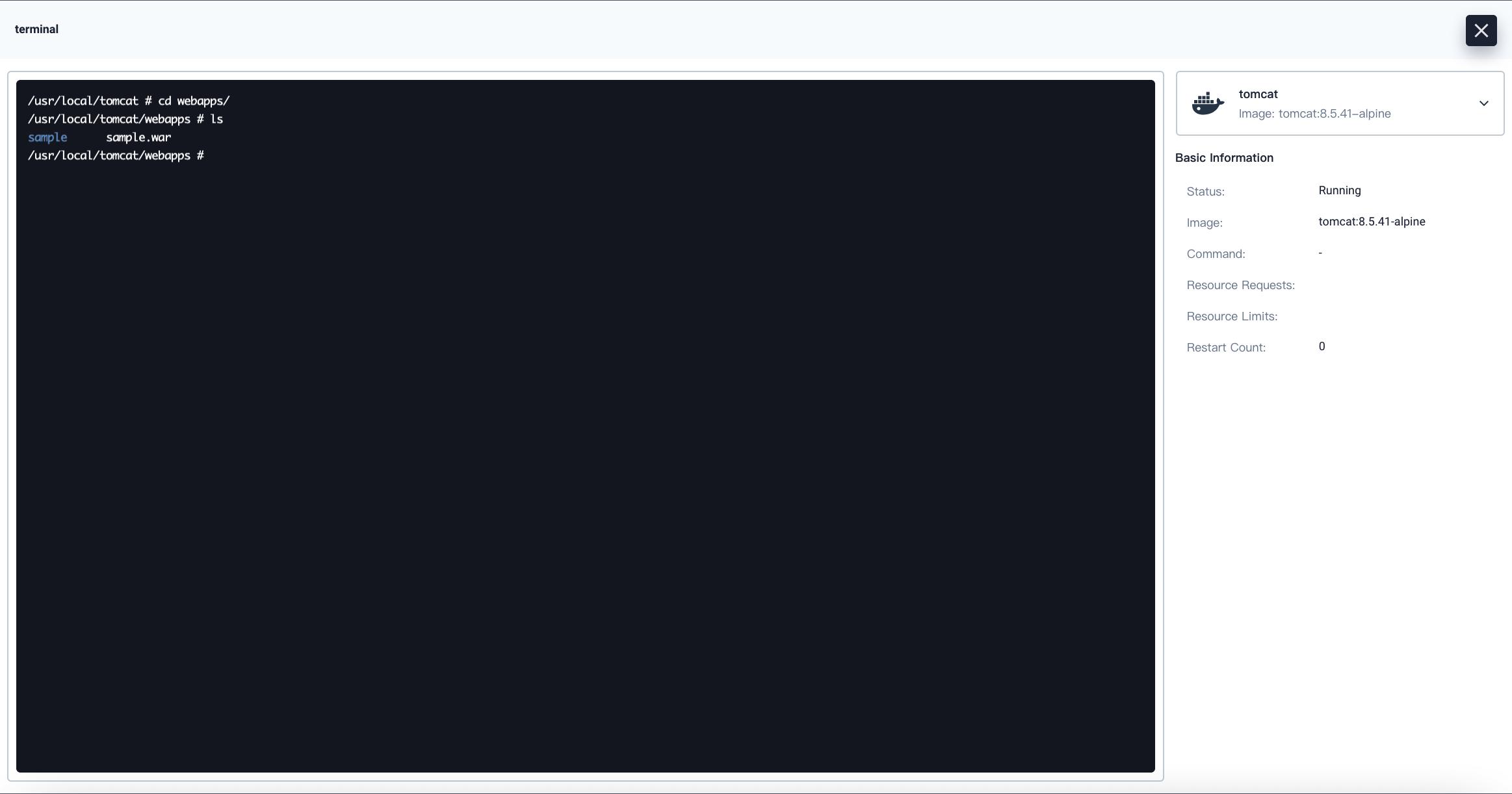
Deploy Tomcat on KubeSphere
Apache Tomcat powers numerous large-scale, mission-critical web applications across a diverse range of industries and organizations. Tomcat provides a pure Java HTTP web server environment in which Java code can run.
This tutorial walks you through an example of deploying Tomcat from the App Store of KubeSphere.
Prerequisites
- Please make sure you enable the OpenPitrix system.
- You need to create a workspace, a project, and a user account for this tutorial. The account needs to be a platform regular user and to be invited as the project operator with the
operatorrole. In this tutorial, you log in asproject-regularand work in the projectdemo-projectin the workspacedemo-workspace. For more information, see Create Workspaces, Projects, Users and Roles.
Hands-on Lab
Step 1: Deploy Tomcat from the App Store
On the Overview page of the project
demo-project, click App Store in the upper-left corner.Find Tomcat and click Install on the App Information page.
Set a name and select an app version. Make sure Tomcat is deployed in
demo-projectand click Next.In App Settings, you can use the default settings or customize the settings by editing the YAML file directly. Click Install to continue.
Wait until Tomcat is up and running.
Step 2: Access the Tomcat terminal
Go to Services and click the service name of Tomcat.
Under Pods, expand the menu to see container details, and then click the Terminal icon.
You can view deployed projects in
/usr/local/tomcat/webapps.
Step 3: Access a Tomcat project from your browser
To access a Tomcat project outside the cluster, you need to expose the app through a NodePort first.
Go to Services and click the service name of Tomcat.
Click More and select Edit External Access from the drop-down list.
Select NodePort for Access Method and click OK. For more information, see Project Gateway.
Under Ports, you can see the port is exposed.
Access the sample Tomcat project through
<NodeIP>:<NodePort>/samplein your browser.
Note
You may need to open the port in your security groups and configure related port forwarding rules depending on where your Kubernetes cluster is deployed.For more information about Tomcat, refer to the official documentation of Tomcat.
Feedback
Was this page Helpful?
Receive the latest news, articles and updates from KubeSphere












 Previous
Previous
